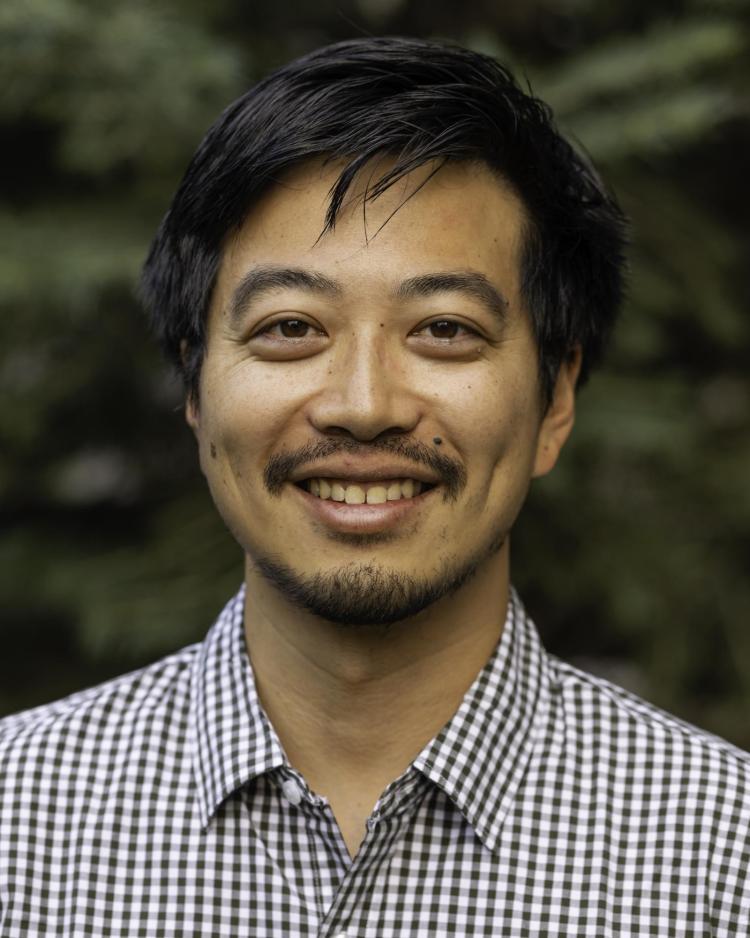Genetic ‘freeloaders’ may play key role in immune system
CU Boulder researcher Edward Chuong recently received an international award for his lab’s work studying transposons in the human genome
Our genome, it turns out, is full of freeloaders—selfish elements that behave like viruses, because they exist to copy and paste themselves, but unlike viruses, they can’t leave the cell.
Called transposons, they compose about 50% of the human genome. In fact, most life on Earth contains transposons in their genomes and scientists theorize that transposons have existed since the early beginnings of life on this planet.
However, just because transposons can’t leave a cell doesn’t mean they’re merely “junk DNA” or bugs in the genetic code that can’t affect the cell. Edward Chuong, an assistant professor of molecular, cellular and developmental biology at the University of Colorado Boulder, has found that transposons play a role in the human immune system and how cells communicate within it.
Chuong recently was recognized for this work by the International Cytokine & Interferon Society with the 2023 ICIS-Regeneron New Investigator Award for Excellence in Cytokine and Interferon Research. The award will be presented in October at the Cytokines 2023 conference in Athens, Greece.

Researcher Edward Chuong recently earned the 2023 ICIS-Regeneron New Investigator Award for Excellence in Cytokine and Interferon Research from the International Cytokine & Interferon Society.
Chuong and his research colleagues in the Chuong Lab have studied how transposons can affect signaling by interferons, which are proteins produced by many types of cells in response to infection. They found that transposons can both help and hinder the interferon response of cells.
“One way to think about transposons is they’re inherently parasites that can occasionally be domesticated to help their hosts,” Chuong says. “We found in certain cells that when we deleted the transposon but not the gene, we broke the function necessary for an antiviral response. We showed that cells could no longer respond to a virus because they were missing this transposon, which was an interesting twist to the evolutionary arms race against disease. We’re starting to see we’ve gotten some help from very old viral infections to fight new ones.”
Not all junk DNA
Chuong and his colleagues have extensively studied endogenous retroviruses, a type of transposon originating from past retroviral infections. A retrovirus, one of which is HIV, is a type of RNA virus that has a special enzyme to convert its genetic information into DNA. When it invades a cell, it can insert that DNA into the host cell’s DNA and fundamentally change its genome. When this happens to cells that give rise to sperm or egg cells, the retrovirus can become a part of the next generation’s genome.
They identified MER41, an ancient retrovirus that invaded the genomes of humans’ primate ancestors more than 50 million years ago and found that it had been “domesticated” to regulate important immune-defense genes, including the antiviral gene AIM2.
“If we consider that key parts of our DNA are not human in origin, it implies that we are all genetically modified organisms, being changed in important ways by ancient transposons and viruses,” Chuong says. “What we think of as ‘human’ DNA is likely to be less than half of the human genome sequence. Throughout our evolutionary history, transposons have been invading and replicating within our genome, and eventually going extinct. Yet, each invasion leaves behind a ‘fossil record’ of potentially thousands of copies in the genome.
“So, the vast majority of these transposons are junk DNA, but not all of them. We thought that some of them must be important and must have shaped our evolution and biology.”
A classic example of this is a set of genes called RAG1 and RAG2, which are responsible for shuffling human DNA to generate the virtually infinite variation in antibodies for adaptive immune response. Researchers have learned that these proteins originated from what was once a parasite “and our evolutionary ancestors were able to co-opt these proteins for an immune function,” Chuong says. “Transposons are a pivotal source of new genetic material and are increasingly appreciated to be important for adaptation and change in DNA.”
Understanding immune response
Chuong’s research on transposons’ role in the immune system has looked at how they can regulate immune signaling and how they affect the communication system cells use to coordinate immune response.
We’re starting to see we’ve gotten some help from very old viral infections to fight new ones."
“When you get infected by a virus, immune cells detect that and release many cytokines, which are signaling proteins that help control inflammation; one of the most important of these is interferon,” Chuong says. “Other cells will detect interferon using a receptor on the outside of the cell, which causes the activation of immune genes.
“But these are not genes that you want on all the time; that’s what would lead to autoimmunity. So, when a cell is stimulated with interferon, several hundred genes with antiviral and inflammatory functions become activated.”
Activating interferon activates transcription factors, which are proteins that modulate how a cell translates DNA to RNA. They travel into the cell’s nucleus and trigger gene expression, or the process by which instructions in DNA are turned into a functional product like protein.
“The work that this award recognizes shows that a lot of these regulatory elements, you can think of them as switches or knobs,” Chuong says. “They’re not coding DNA, but often are around or upstream of a gene. We’ve found that these non-coding regulatory elements that control immune gene expression are themselves derived from transposons.”
This research has potential implications for understanding and treating many diseases, including cancer. Chuong and his colleagues have found that some transposons that are usually inactive in healthy cells become reactivated in tumor cells. Future research may delve into what that means for making the immune system more susceptible to therapy.
Did you enjoy this article? Subscribe to our newsletter. Passionate about genetic research? Show your support.

